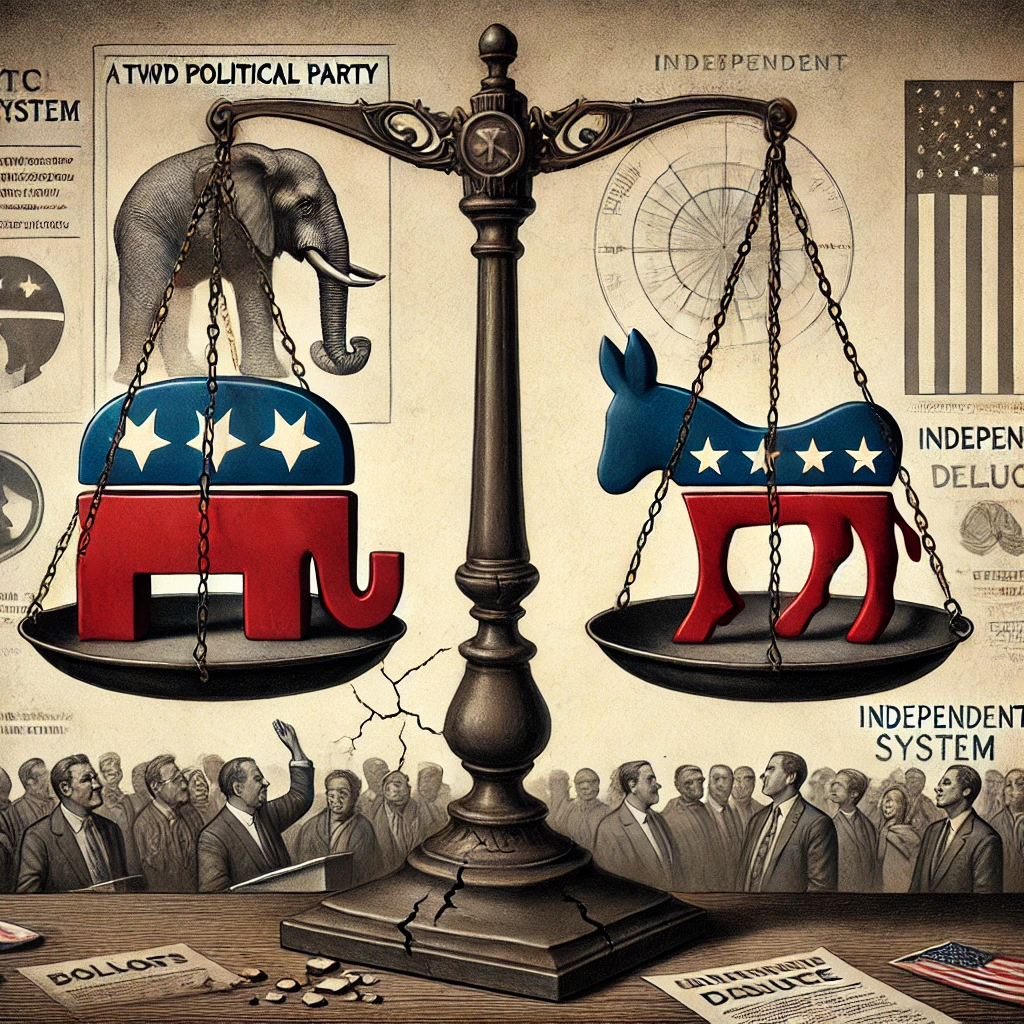
The idea of introducing a third party into the political landscape is a recurring topic of discussion in democratic societies. Proponents argue that a third party can break the monopoly of the two dominant parties, offering fresh perspectives and representing a broader spectrum of voter interests. However, while the concept may seem appealing in theory, the practical implications reveal several challenges that could undermine the stability and effectiveness of government. This blog will explore the potential consequences of a third-party system, ultimately concluding that a two-party system, despite its imperfections, remains more conducive to effective governance and societal stability.
The Allure of a Third-Party
The primary argument for a third party is that it can introduce new ideas and policies that the two major parties often overlook. A third party can cater to specific issues and demographics that feel underrepresented, fostering a more inclusive political environment. Additionally, it can act as a mediator, bridging the ideological gap between the two dominant parties and promoting more nuanced debates.
The Potential Consequences of a Third-Party System
While introducing a third party may appear beneficial on the surface, it can lead to several unintended consequences that undermine democratic principles and effective governance.
1. The Risk of Minority Rule
One significant concern with a third-party system is the potential for minority rule. In many electoral systems, if the vote is split among three or more parties, it becomes possible for a party with only a minority of the votes to gain power. This scenario can occur even if most voters disagree with the policies and platform of the winning party. For example, in a hypothetical election where one side is split between two similar parties, the opposing party could secure a majority of seats with a relatively small percentage of the total vote. This outcome contradicts the principle of majority rule, leading to governance that does not reflect the preferences of most citizens.
2. Fragmentation and Ineffective Governance
A third-party system can also result in political fragmentation, making it difficult to form stable and effective governments. This often necessitates coalition governments, which can be inherently unstable in parliamentary systems. Coalition partners may have divergent agendas, leading to frequent disagreements and policy paralysis. The need to appease multiple parties can result in compromises that dilute policy effectiveness and hinder decisive action on critical issues.
3. Compromise and Centrist Policies in a Two-Party System
In contrast, while not without flaws, a two-party system tends to encourage compromise and centrist policies. The two dominant parties must often find common ground for any effective government to function. This requirement for compromise means that policies are more likely to reflect a broader consensus, avoiding extreme shifts that can cause societal upheaval. By moving towards the center, both parties contribute to gradual and steady progress, ensuring that changes are implemented to maintain civil discourse and societal stability.
4. Slow and Steady Progress
A two-party system fosters an environment where societal change is incremental rather than revolutionary. While this slow pace of change can be frustrating for those seeking rapid reform, it also minimizes the risk of abrupt disruptions. Steady progress allows for societal adaptation and reduces the likelihood of significant backlash. This gradual approach is essential for maintaining social cohesion and ensuring that changes are sustainable in the long term.
The Case for a Two-Party System
While the idea of a third party in government holds theoretical appeal, the practical consequences often lead to instability and ineffective governance. A third-party system increases the risk of minority rule, political fragmentation, and policy paralysis. In contrast, by necessitating compromise and encouraging centrist policies, a two-party system promotes steady societal progress and maintains civil discourse.
The two-party system’s ability to foster gradual change and require consensus makes it better suited for ensuring long-term stability and effective governance. While no political system is perfect, the two-party system’s capacity to balance competing interests and reflect the majority’s will makes it a more reliable foundation for democratic governance.
As we consider the future of our political landscape, it is crucial to weigh the theoretical benefits of a third-party system against the practical realities. Ultimately, despite its imperfections, the two-party system remains the most viable structure for promoting stability, effective governance, and sustained progress in our society.